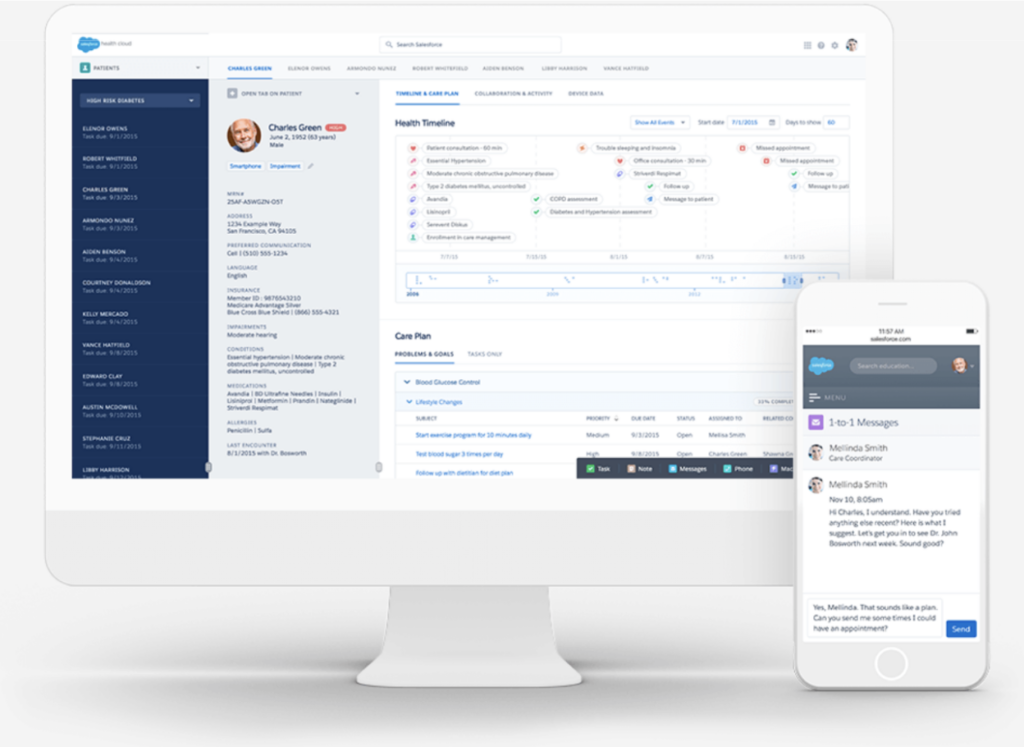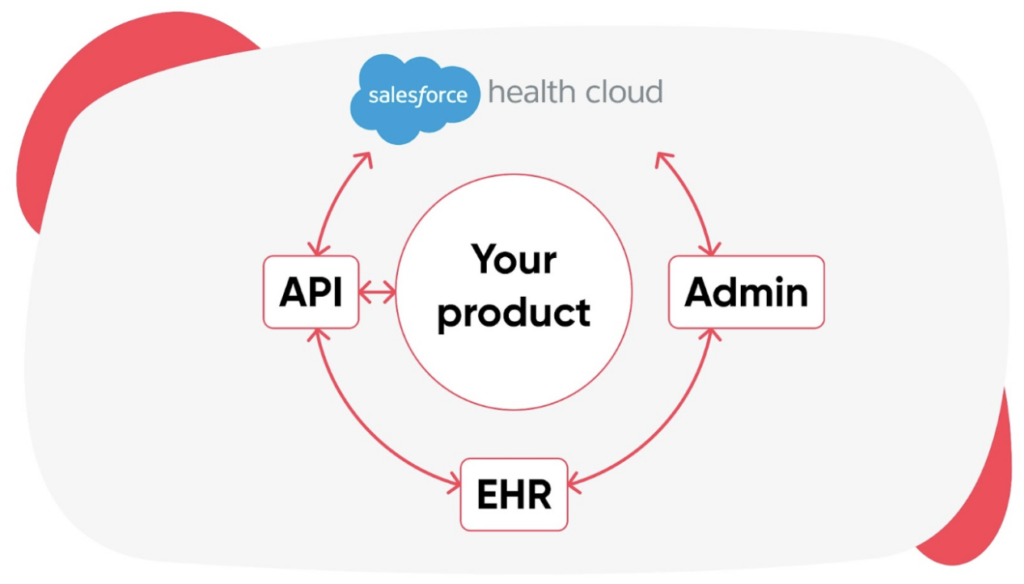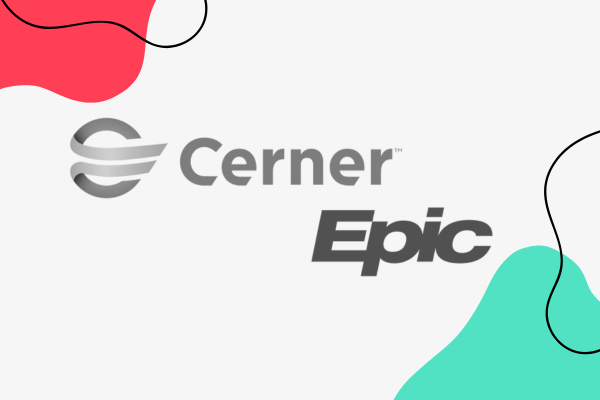How to integrate Salesforce Health Cloud into your digital health product

In today’s rapidly evolving digital health landscape, seamless access to accurate and up-to-date patient data is crucial. Salesforce Health Cloud offers a powerful solution to bridge the gap between healthcare providers and digital health products. In this guide, we will explore the steps to successfully integrate Salesforce Health Cloud into your digital health product. By harnessing the capabilities of this platform, you can enhance the functionality of your application, improve patient outcomes, and streamline healthcare data management.
About Salesforce Health Cloud
Salesforce Health Cloud is an online healthcare platform powered by one of the largest online product development companies, Salesforce. The system is a complete health CRM solution, which enables full health data transfer with the help of other SalesForce products, thus functioning as a full health management system.
Salesforce Health Cloud helps to create the most complete and comprehensive information and data provided about a patient. The main data of patients can be tracked through the system, as well as their condition, information about their medications, history, and communication options. In addition, it can be coordinated with EHR systems and is also suitable for managing their data.
The system is based on the cloud-based service of Salesforce Service Cloud, which was specifically designed for use in the life sciences. Through this solution, the related CRM system for managing team members and customers becomes accessible to users, too.

How can we use it in our services?
Thanks to its comprehensive solutions, the system offers a robust approach to managing and systematizing widespread data. This approach brings numerous benefits, yet it demands proficient developer or project management involvement, as well as UX/UI expertise, to ensure the correct flow and utilization of data within our product.
Salesforce facilitates these capabilities, largely owing to the skillful development of its team. Experts in the field can efficiently create the necessary integrations. It’s crucial to note that Salesforce does not offer a free version of the product. Additionally, an account registration is required to access the Sandbox mode. Therefore, it is advisable to carefully consider and plan the appropriate process and usage strategy before getting started.
Health Cloud is not an Electronic Health Record (EHR) system, but it enables the utilization of patient data from both the patient and system perspectives. When integrated with an EHR system, it can effectively facilitate comprehensive health data flow and management.
Direct connection of Health Cloud with an EHR system isn’t possible. However, Salesforce recommends using an intermediate data carrier API for this integration. Thus, to utilize Health Cloud data effectively, a tailor-made data connection can be set up for this purpose.
The primary drawback of this approach is the necessity to prepare the communication branch. However, a significant advantage is the ability to fully customize our data flow according to specific needs, ensuring the elimination of any unnecessary elements. This customization allows us to concentrate more effectively on the desired solution, thereby creating a process that optimally supports our product and business objectives.
Therefore, the data flow we aim to create can be envisioned as follows:

This integration can be implemented either as a standalone API solution, which is adaptable for communication with multiple interfaces, or as a development integrated into a specific product, thereby more effectively catering to that product’s specific needs.
To establish this integration, two key things are required:
- Access to the Health Cloud platform through an appropriate Salesforce subscription
- Developer expertise that aligns with the specific needs of our product
Example: Using Salesforce Health Cloud in a mobile app
Although Salesforce Health Cloud can function as a standalone product, our current case study focuses on exploring its integration benefits and features. As previously mentioned, it’s advisable to engage in thorough preliminary planning of functions and processes for the optimal use of the system.
In this phase, it’s essential to think strategically in terms of the specific goals you aim to achieve. Consider pondering over the following suggested questions:
- What are our current product features and what do we want to achieve through this integration?
- Besides creating a data stream, what additional functionalities or features should we incorporate into our product?
- Should we anticipate any further integrations in the future? If so, where and how might we want to implement these integrations?
Taking these considerations into account, we can outline a conceptual framework and a strategy for users to effectively utilize integration and support functions.
To illustrate this, we created a test case, which provided the following insights in response to the previously mentioned questions:
- In our current health application, featured in a previous case study, users can search for doctors using text and AI-based methods. Integrating this with Health Cloud would allow us to store booking data and schedule availability within the Health Cloud system, facilitating subsequent administrative processes.
- As this is a test project, our primary focus is on integration rather than broader service use. However, in a more general application, requirements could include coordination with existing health administration systems or generating periodic reports from incoming data.
- Our test project has already undergone two rounds of improvements, enhancing our presentation of health solutions. Moving forward, we plan to further leverage this integration by connecting the generated data with additional systems and feeding more data into the Health Cloud system through subsequent integrations.
Drawing on these insights, we put together a sketchy plan for usage and functionality, which can be outlined as follows:

Considering everything, starting the integration in our product is a good idea. It helps us see our goals clearly and plan development steps better.
The outcomes
Earlier, we initiated a pilot project to test the functionality and opportunities of a no-code/low-code editor. We built a test online medical appointment booking interface concept with Bubble, which we named ‘Dr. Bubble.’ We created several versions of it based on our earlier case studies, integrating with ChatGPT, EPIC and Cerner integrations.
Here’s the latest update: we’ve developed a concept for integrating with Salesforce HealthCloud. We were intrigued by the potential uses of this data for appointment reservations. In this version, we’ve made updates to the following screens and blocks:
- Users can access their HealthCloud history through connected doctors in our network
- On the doctor’s list page, visitors can see a list of doctors who have integrated with HealthCloud
- When users select a specific doctor, they can access historical data from their previous visits
As a result of this concept, it’s evident that HealthCloud offers significant integration potential. In this case, the data flow differs slightly from EPIC and Cerner, as it revolves around HealthCloud admins’ and doctors’ accounts, connected to the current user. This setup enables users to access their data based on the clinic’s Salesforce account. By offering this information, users can make more informed reservation decisions, taking into account their current health status and previous visits.
The SalesForce HealthCloud integration concept into Dr. Bubble pilot app, made by bene : studio
Conclusion
Salesforce Health Cloud stands as an excellent platform for those seeking comprehensive health data management systems or aiming to harness data flow across various segments and applications.
The developer documentation for this platform is well-detailed and comprehensive, serving as a valuable guide for crafting the desired solution. However, owing to the product’s robustness, it necessitates a structured and experienced approach to design that aligns with your specific needs and objectives.
If you believe that Salesforce integration could benefit your product, don’t hesitate to reach out to us. Our expert team is well-prepared to assist you in designing and implementing the most optimal and effective solution tailored to your requirements.






